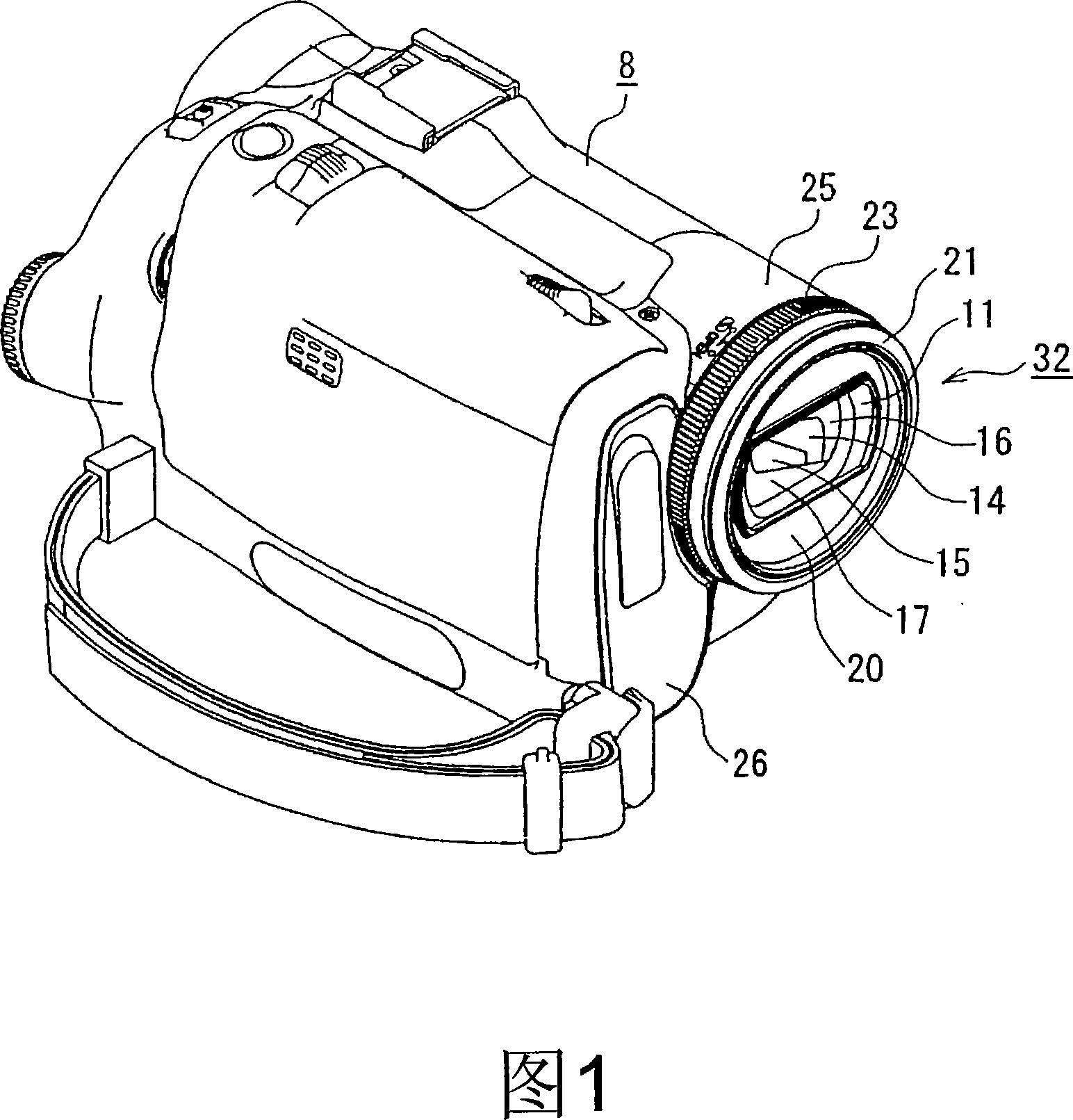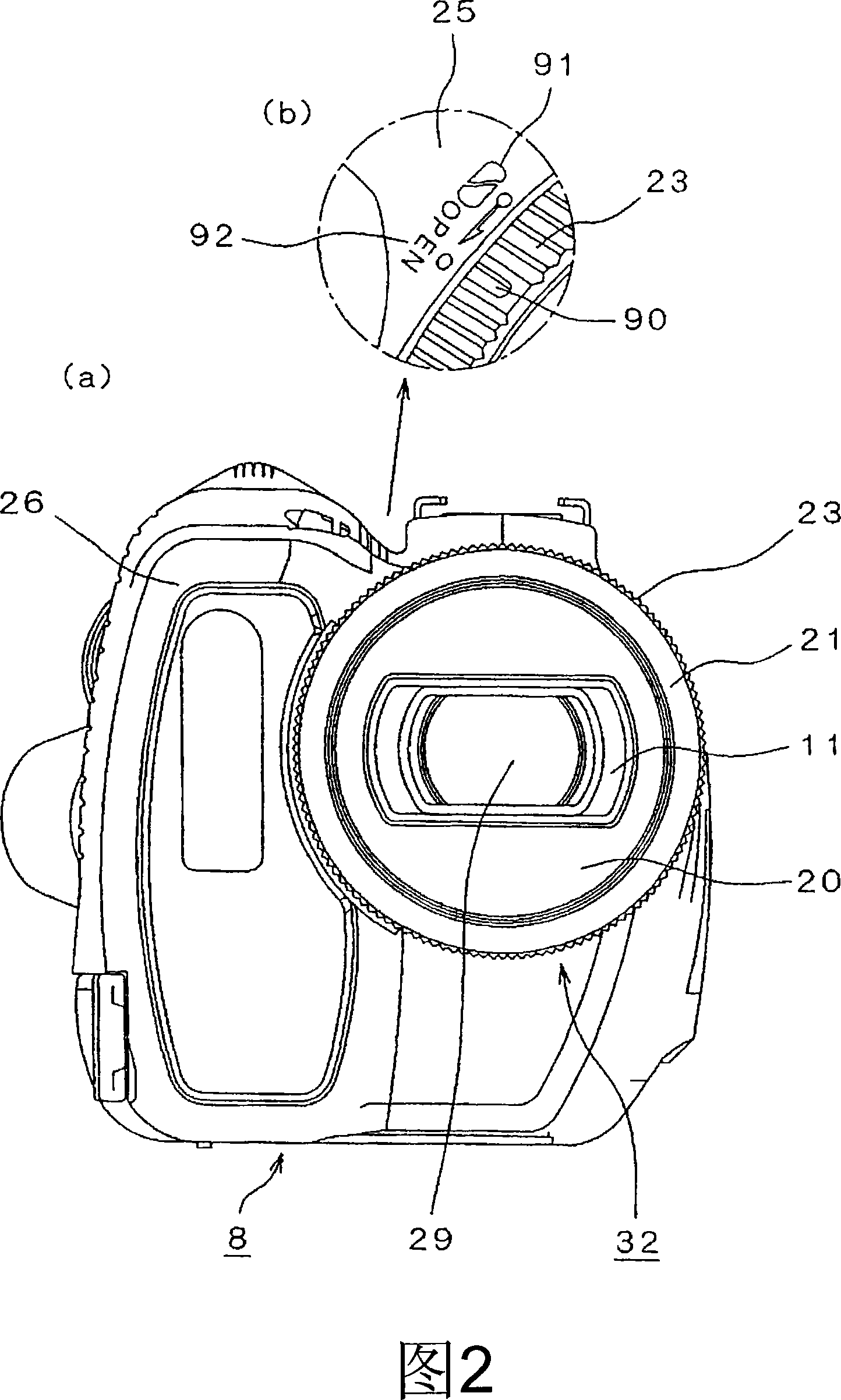Lens hood device, and image pickup device using the same
A hood and lens technology, which is applied to optics, camera bodies, filters for photography, etc., can solve the problem that the lens cover 105 that may be shaken by the lens cover rope 106 that interferes with photography hits the video recorder body 101, the lens, etc. The cover 105 is detached, etc., to protect the lens and improve the operability.
- Summary
- Abstract
- Description
- Claims
- Application Information
AI Technical Summary
Problems solved by technology
Method used
Image
Examples
Embodiment approach 1
[0076] FIG. 1 is a perspective view showing the configuration of an imaging device housing a lens barrier unit according to Embodiment 1 of the present invention. 2( a ) and FIG. 2( b ) are a front view and a main part perspective view showing a state in which the lens barrier of the imaging device is opened. 3( a ) and FIG. 3( b ) are a front view and a main part perspective view showing a state where the lens barrier is closed. 4(a) and 4(b) are perspective views of the lens barrier unit. 5 to 10 are exploded perspective views and front views showing the structure of the lens barrier unit. 11 to 14 are exploded perspective views showing the structure of the front unit having a shutter opening and closing mechanism.
[0077] As shown in FIG. 1 , the camera body 8 incorporates an imaging element (CCD image sensor, etc.) that converts incident light signals into electrical signals, that is, video signals, and an information storage medium that records the video signals genera...
Embodiment approach 2
[0199] FIG. 28 is a perspective view showing the configuration of the imaging device in Embodiment 1. FIG. FIG. 29 is an exploded perspective view showing the component configuration of the front portion of the imaging device in Embodiment 2. FIG. In addition, in the configuration of Embodiment 2 shown in FIG. 28 , constituent elements having the same numbers as those in Embodiment 1 are assigned the same functions and operations, and detailed description thereof will be omitted.
[0200] In FIG. 28 , the difference from the structure of Embodiment 2 is that there are no closing marks 91 and opening marks 92 shown in FIG. 1 and FIG. 2( b ).
[0201] In addition, in FIG. 29 , a notch portion 26 b for arranging a motor 41 and a two-stage gear 43 (described later) is formed in the front case 26 .
[0202] The ring 40 is rotatably arranged between the lens cover 25 and the front frame 28 . In addition, a coupling portion 40a is formed on the ring 40, and is coupled to the projec...
PUM
 Login to View More
Login to View More Abstract
Description
Claims
Application Information
 Login to View More
Login to View More - R&D
- Intellectual Property
- Life Sciences
- Materials
- Tech Scout
- Unparalleled Data Quality
- Higher Quality Content
- 60% Fewer Hallucinations
Browse by: Latest US Patents, China's latest patents, Technical Efficacy Thesaurus, Application Domain, Technology Topic, Popular Technical Reports.
© 2025 PatSnap. All rights reserved.Legal|Privacy policy|Modern Slavery Act Transparency Statement|Sitemap|About US| Contact US: help@patsnap.com



